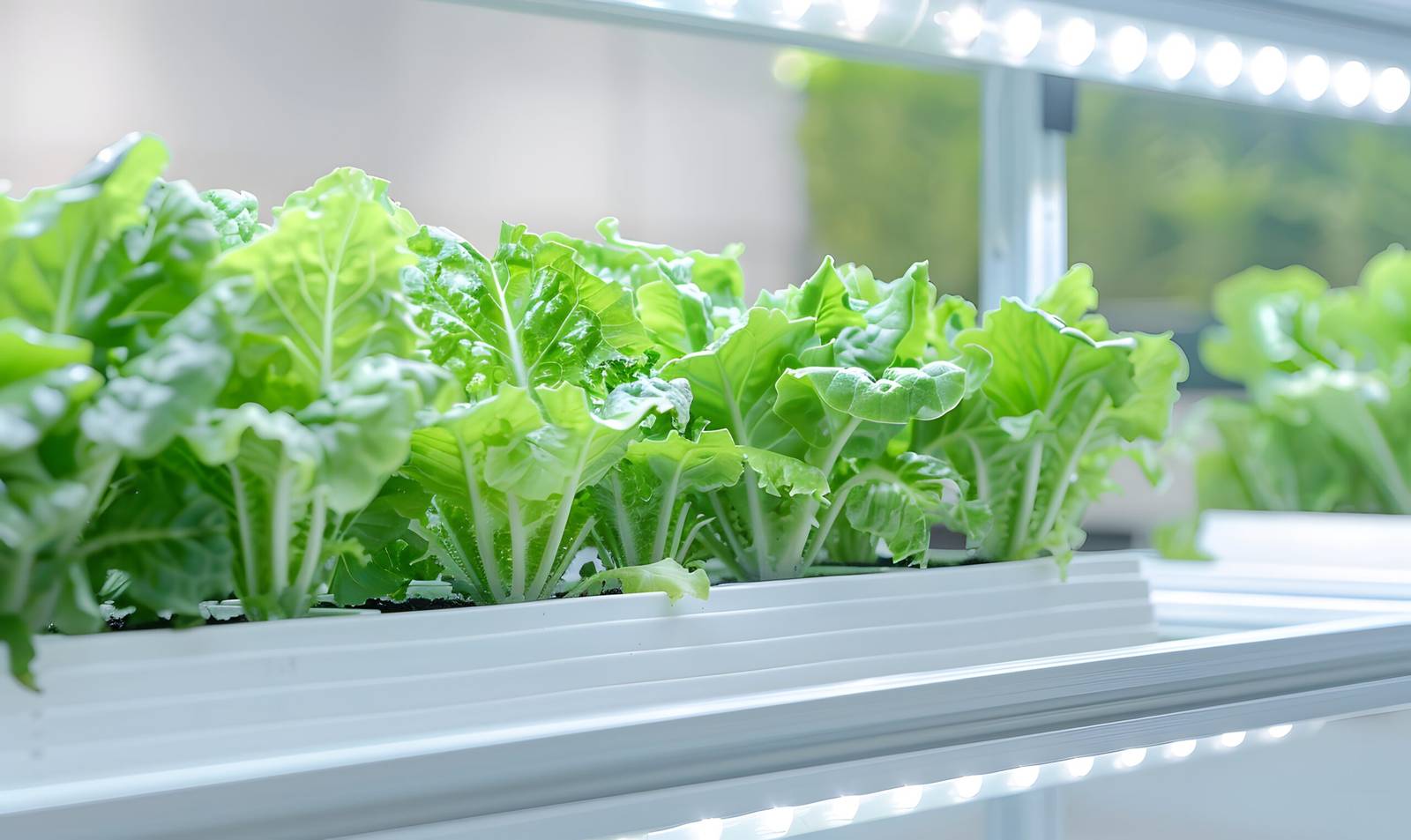
Federal Grant Supports Research in Hydroponic Lettuce Production
- foodfightadmin
- August 15, 2024
- Agriculture, Climate Change, Federal, Report
- adlps, ads pages
- 0 Comments
In an effort to advance the growing field of controlled environment agriculture and vertical farming, a new $300,000 federal grant has been awarded to enhance the production of hydroponic lettuce. The grant, funded by the U.S. Department of Agriculture’s National Institute of Food and Agriculture, aims to address critical challenges in the hydroponics industry by focusing on the use of soilless substrates to control pests and pathogens.
Kristen Gibson, director of the Arkansas Center for Food Safety and a faculty member at the Arkansas Agricultural Experiment Station, is leading the research initiative. Gibson emphasized the importance of this grant in meeting the evolving needs of the hydroponics industry. “The industry is always looking for what’s going to help them grow the best product, increase profit and not cause disease,” she said.
The timing of this grant is particularly pertinent as U.S. hydroponic production of lettuce has seen rapid growth. According to a January 2024 report by the USDA, hydroponic lettuce production more than doubled in a five-year span, from 15.4 million pounds in 2014 to 36.4 million pounds in 2019. This surge underscores the need for a deeper understanding of plant pathogens and food safety risks within these systems, a gap that Gibson and her team aim to fill. “It’s a growing industry,” Gibson noted. “They are asking for solutions, and we’re trying to help provide them with some guidance on what we know.”
The core of the research will be an evaluation of soilless substrates, which serve a crucial role in hydroponic systems by physically supporting plants and delivering oxygen, nutrients, and water to the roots. Common soilless substrates include materials like volcanic rock, coconut coir, sand, perlite, and vermiculite. Gibson pointed out that these substrates are pivotal points where growers can intervene to prevent the introduction and spread of pests and pathogens. “They want to see what’s out there — what can be validated — because soilless substrates are often considered a point where some of these plant pathogens could be introduced,” she explained.
The research will not only focus on pathogens that pose risks to human health but also on those that threaten plant health. Gibson highlighted the dual focus of the project, noting that combining strategies to address both plant pathogens and food safety could lead to more effective outcomes. “If we combine strategies where you’re addressing plant pathogens at the same time as food safety, it works better,” she said.
The project will be a collaborative effort, with co-principal investigators including Rupesh Kariyat, an associate professor of insect-plant interactions and chemical ecology in the entomology and plant pathology department, and Ryan Dickson, an assistant professor of greenhouse and controlled-environment agriculture in the horticulture department. All three researchers are affiliated with the Arkansas Agricultural Experiment Station, the research arm of the University of Arkansas System Division of Agriculture.
The first objective of the research will be to assess how different soilless substrates influence the persistence of foodborne pathogens and plant pests within a controlled greenhouse environment. “The first part is to look at a lot of the substrates that are available on the market,” Gibson said. “We want to figure out which ones are actually aiding in the proliferation or the persistence of plant pathogens, plant pests, or human pathogens of concern.”
Following this, the researchers will evaluate the effectiveness of various biopesticides—non-synthetic pesticides—in controlling pests and pathogens across different substrates. Gibson emphasized the importance of considering the scalability of these solutions for commercial operations. “We can do application on a small scale, but when you think about a commercial scale, you want to figure out what’s going to make this feasible for growers,” she said.
The final objective of the project is to translate the research findings into practical guidelines and best practices for hydroponic lettuce growers. Gibson and her team plan to develop comprehensive training materials and conduct workshops and training sessions to disseminate their findings to producers, helping them implement the most effective strategies for controlling pests and pathogens in their operations.
This grant and the research it supports have the potential to significantly advance the hydroponic lettuce industry, providing growers with the tools they need to produce safer, healthier crops more efficiently. As controlled environment agriculture continues to expand, these efforts will be crucial in ensuring that the industry can meet the growing demand for fresh, locally produced food.








